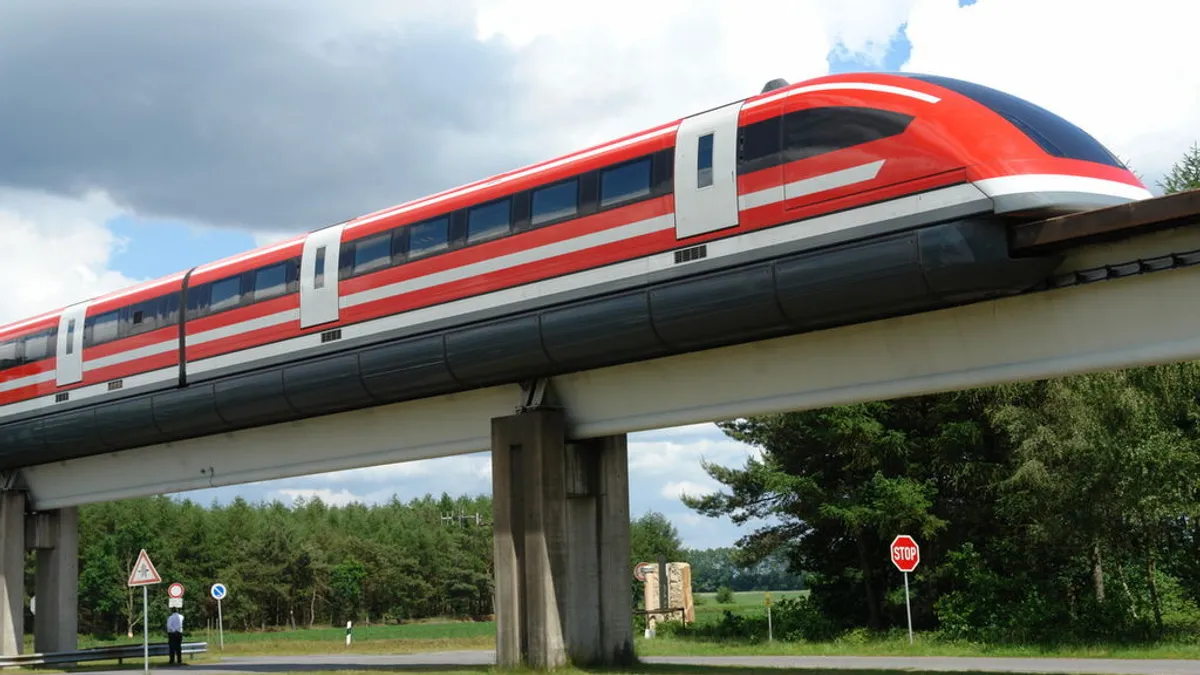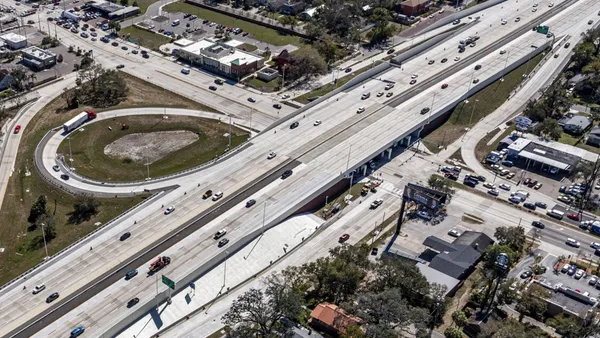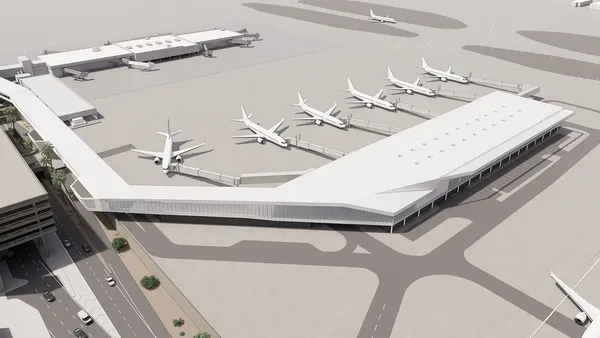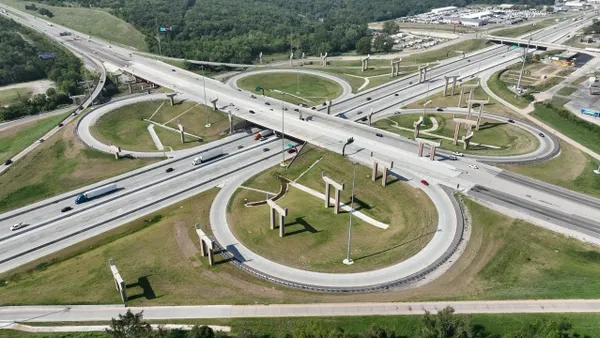Dive Brief:
- The Federal Railroad Administration released a preliminary review of the Baltimore-Washington Superconducting Maglev Project, which would transport passengers by train between the cities in eight to 15 minutes.
- The 40-mile-long leg of the proposed SCMAGLEV would be the first part of a maglev rail connecting Washington, D.C., and New York City.
- Pending federal approval of the project — which could occur this year — the system could be complete within a decade, at a cost between $13.8 billion and $16.8 billion, according to The Washington Post.
Dive Insight:
The magnetic levitation form of transit allows for traveling at much higher speeds than traditional rail. According to the report, the SCMAGLEV would reach over 300 mph.
In Japan, longer, high-speed maglev trains have been under construction for more than a decade, with work on the planned Chūō Shinkansen train connecting Tokyo and Nagoya by 2027, and Osaka by 2045. While there are other maglev trains elsewhere in the world, they are nowhere near as long as the planned Japanese lines.
Northeast Maglev, the private investors behind the project, has secured $5 billion from the government of Japan, and will raise the remainder from public and private sources while also seeking federal loans and grants, The Washington Post reported.
Part of the proposal highlights the Baltimore-Washington area as ripe for such a project, due to the high traffic levels and large number of commuters moving between the cities. Transportation infrastructure between the two cities is aging, the report said, making it less reliable.
Construction of the maglev system could create as many as 195,000 construction jobs, paying out between $8.8 billion and $10.6 billion to workers, according to the FRA report.
The SCMAGLEV project will include the two terminal stations in Washington and Baltimore, and one intermediate station at the Baltimore-Washington International Thurgood Marshall Airport. Construction would also encompass several additional facilities for maintenance.
The ambitious transit project would be unlike anything attempted in the U.S. before, and comes at a unique time for rail infrastructure.
In the same region where the SCMAGLEV is being studied, the state of Maryland recently agreed to a $250 million settlement with the firms and managers of the Purple Line light-rail project. The long-delayed public-private partnership continuing now that Fluor has dropped out, leaving just Meridiam and Star America as P3 developers and equity partners
In California, the 23-mile, Central Valley bullet train project faces challenges, as contractor Tutor Perini lambasted the California High-Speed Rail Authority over failure to obtain necessary rights of way. A 36-page letter called the failure “beyond comprehension,” and indicated the $20 billion project might miss a November 2022 funding deadline.
Meanwhile, in Las Vegas, the city council voted in December to advance the Boring Co.’s plans for an underground hyperloop. The Elon Musk-owned company, which completed the rapid tunneling of a people mover at the Las Vegas convention center, has turned its attention to a project that will see Tesla vehicles whisk passengers through tunnels beneath The Strip.














